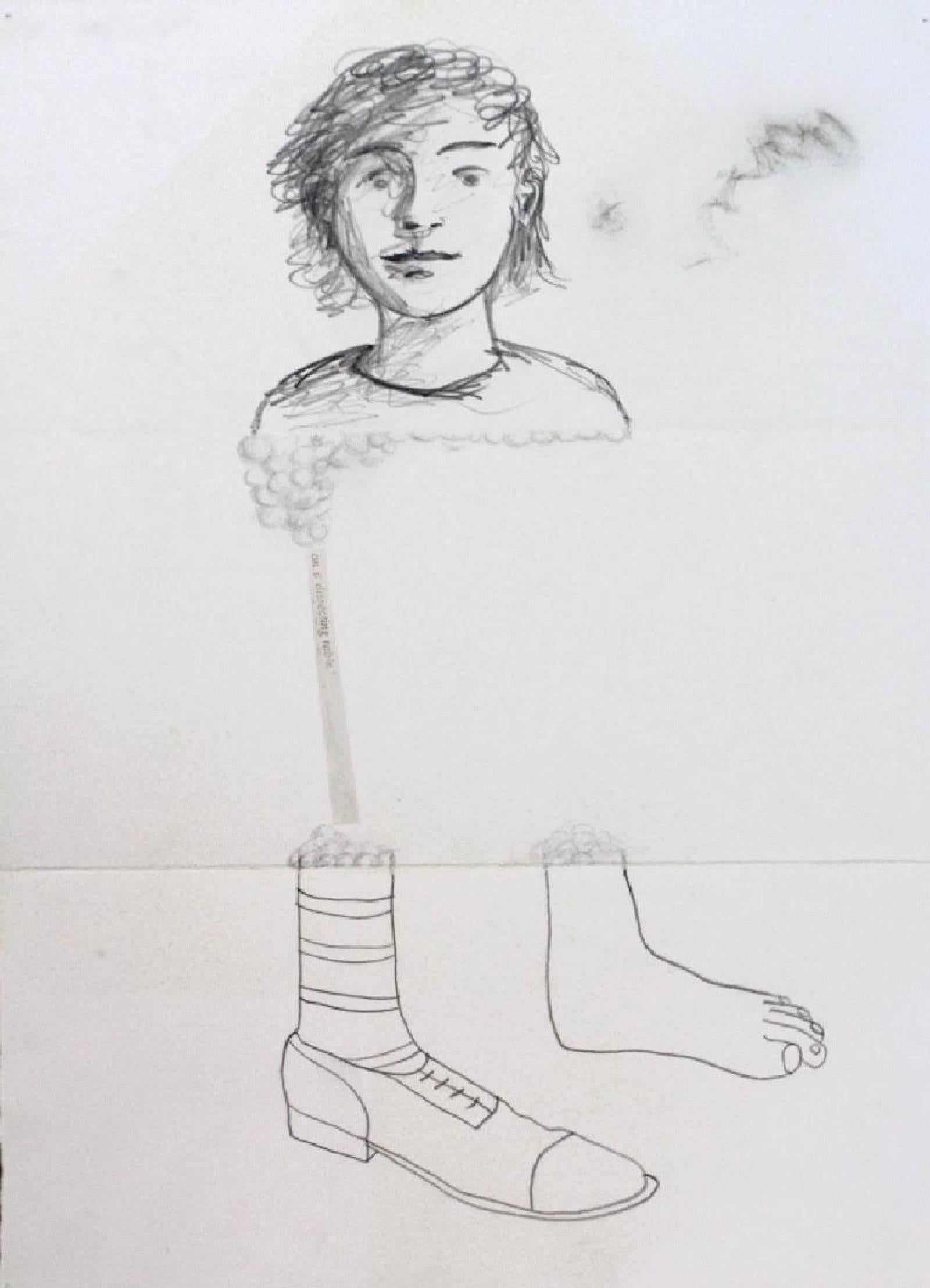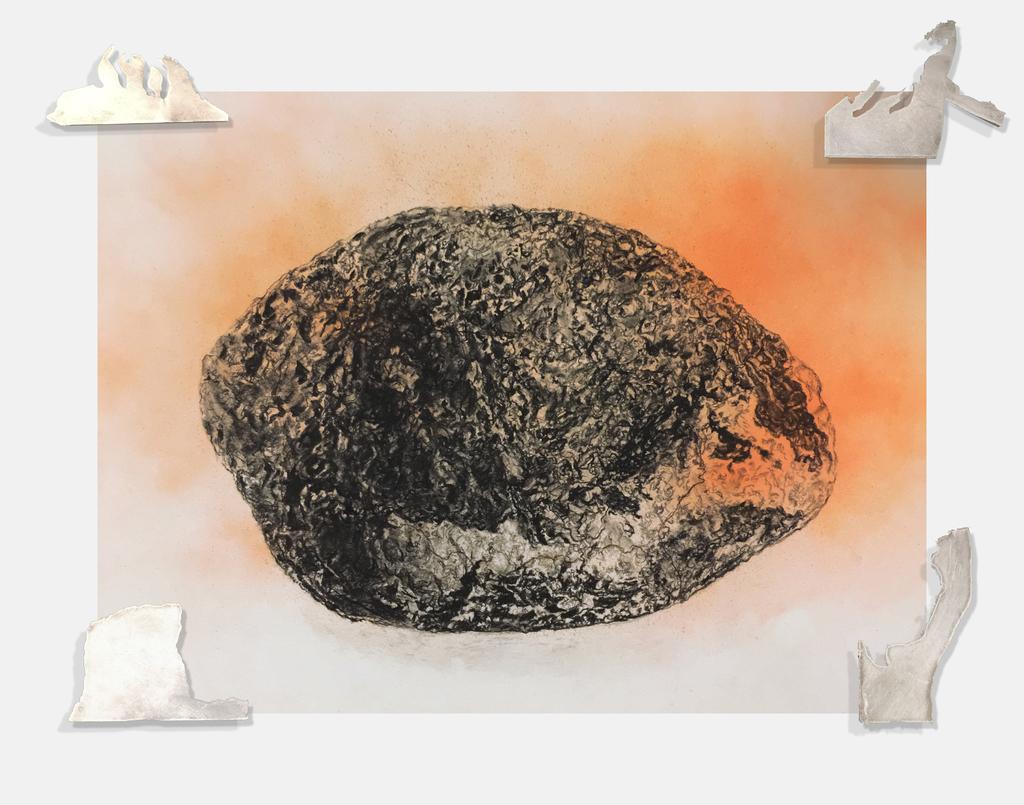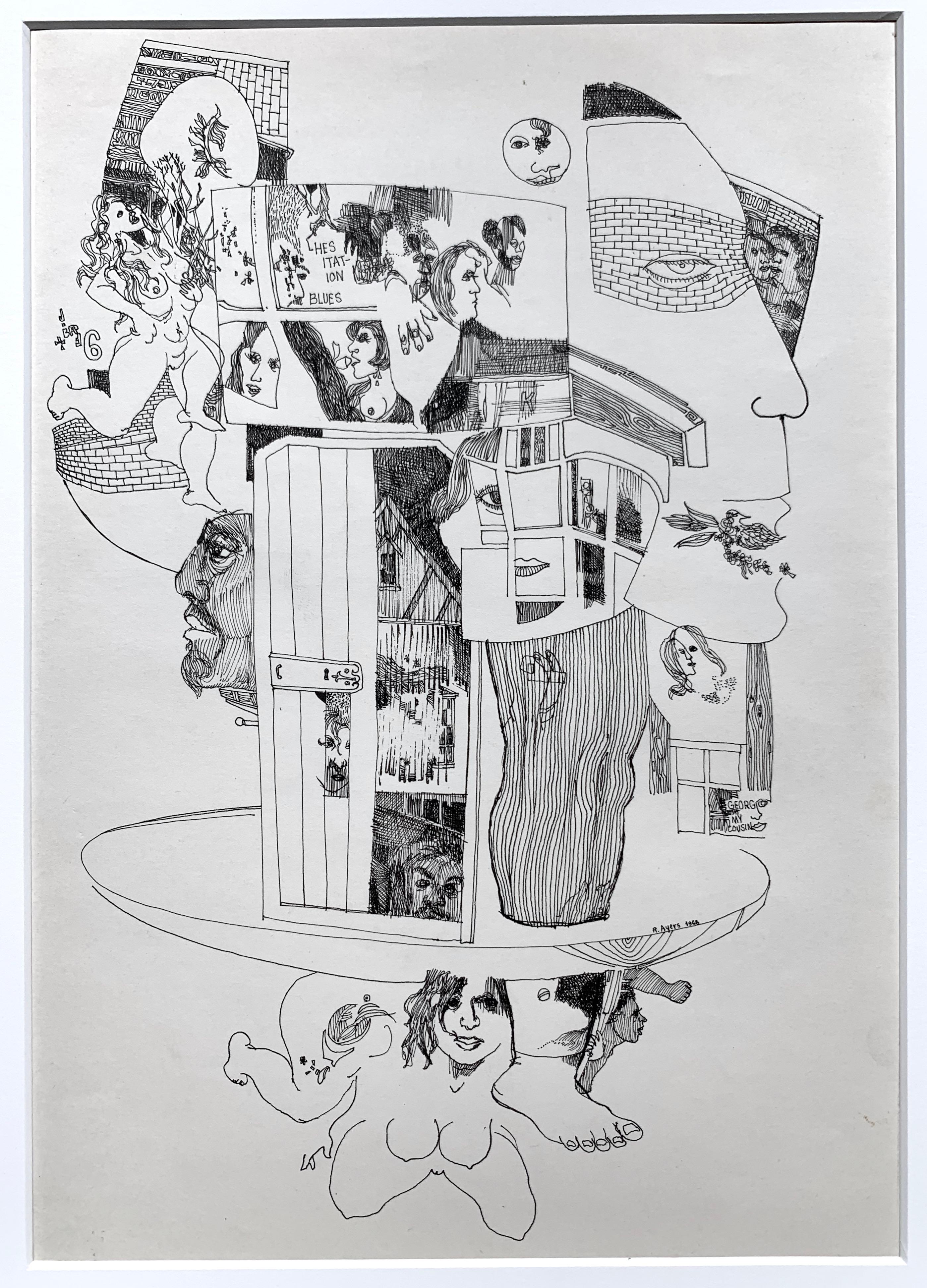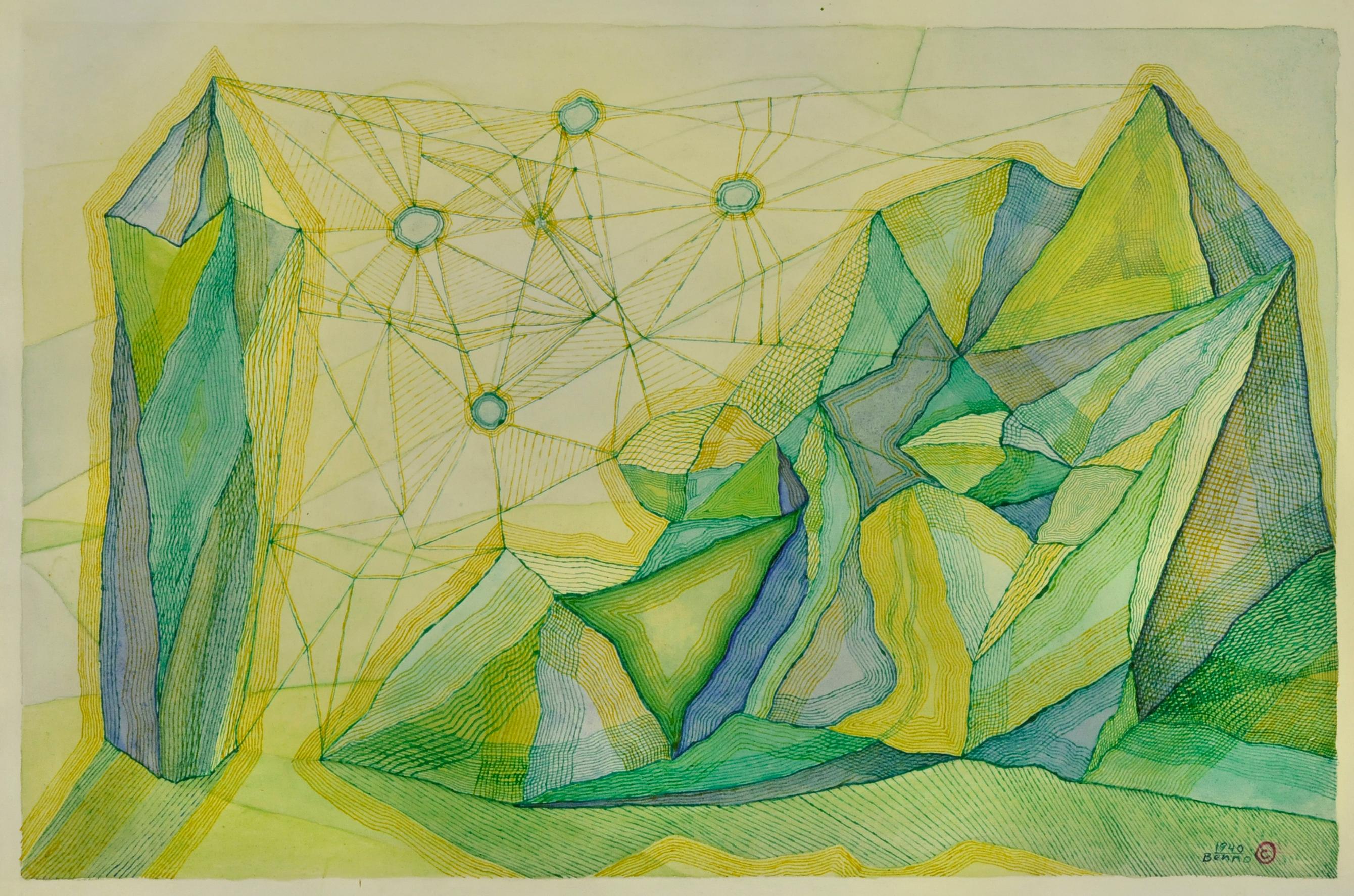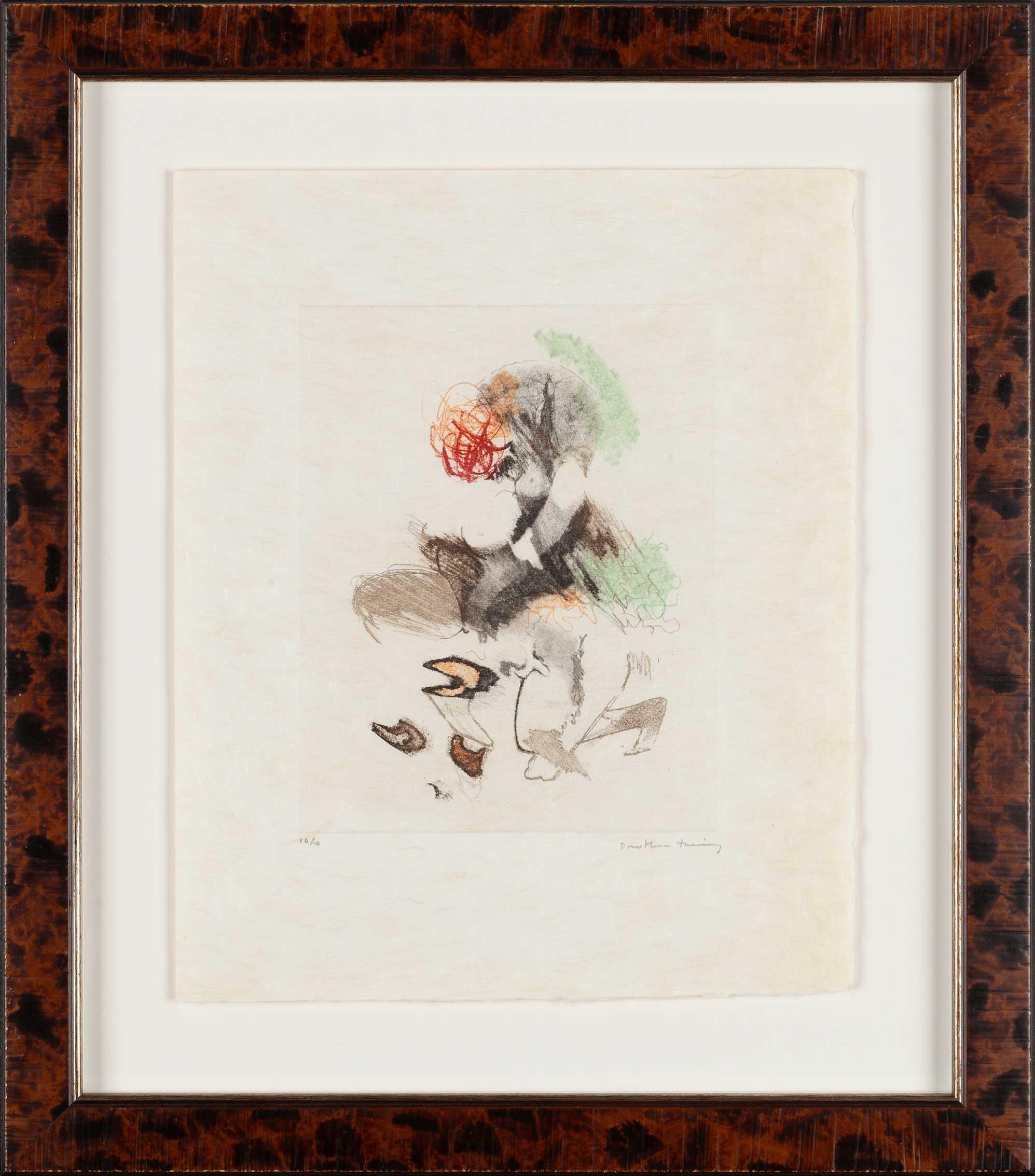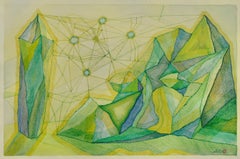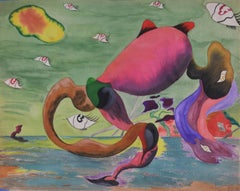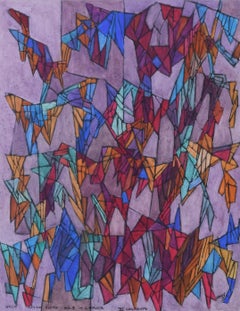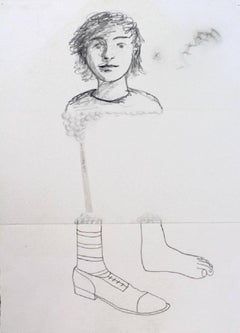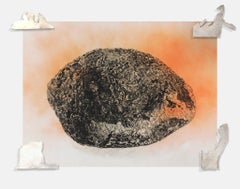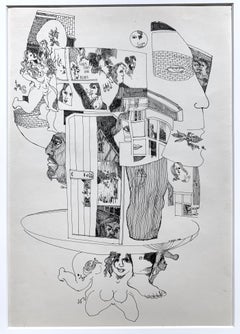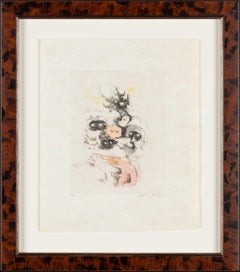Items Similar to Mlle. Jeanne at the Window, No. II
Want more images or videos?
Request additional images or videos from the seller
1 of 13
Benjamin G. BennoMlle. Jeanne at the Window, No. II1933
1933
About the Item
Mlle. Jeanne at the Window, No. II
Charcoal on paper, 1933
Signed and dated lower right (see photo)
Illustrated: Gustafson, Zimmerli Museum, 1988, "Benjamin Benno: A Retrospective Exhibition", No. 12
Gustafson states in her catalogue that this example "is related to both surrealist and cubist prototypes."
Exhibited: Zimmerli Museum, 1988, "Benjamin Benno: A Retrospective Exhibition", No. 12
A copy of the Zimmerli catalog accompanies the drawing
Image: 24 3/4 x 19 inches in oval format
Frame: 38 x 31 x 1 3/4, wormy chestnut frame
Provenance: Estate of the artist
Ruth O'Hara, O'Hara Gallery, Fuller Building, NYC
Jem Hom Fine Art, Washington and New York
Benjamin Benno was regarded as a child prodigy. In 1912 his formal training began with Robert Henri and George Bellows in New York. He studied at the progressive Ferrer School known for its emphasis on freethinking and association with the anarchist movement. For eight years he traveled throughout the world painting and gaining confidence in his art.
Financed by collectors, Benno moved to Paris in 1926. He briefly returned to New York in 1931 and upon receiving a Guggenheim Fellowship immediately returned to Paris where he remained until 1939. By the early 1930s he had established a reputation as a member of the international avant-garde and exhibited with the most significant European artists including Paul Klee, Max Ernst, Wassily Kandinsky, Salvador Dalí, Joan Miró, Hans Arp, and Fernand Léger. Pablo Picasso sponsored Benno's first one-man show in Paris in 1934.
With the outbreak of war in 1939, Benno returned to New York along with many artist exiles. In America, his eccentric nature and experimental paintings were received harshly by critics. Enraged by this reception, Benno became bitter and hostile. Galleries and museums were disturbed by his temperament and Benno’s presence in the art world waned.
Benno spent his last years buying back his works and preparing his papers for posterity. The paintings in this exhibition exemplify a man passionately committed to his art and convinced of his place in history.
This exhibition features major works from the 1930s when Benno was living in Paris and regarded as a distinguished member of the cultural avant-garde.During this time, Benno became acutely aware of the Modernists and reflected various avant-garde movements in his work. The principles of Surrealism, Cubism and Constructivisim influenced Benno, yet his strong personality imbued his art with a distinctive quality.
Courtesy Michael Rosenfeld Gallery
- Creator:Benjamin G. Benno (1901-1980, American)
- Creation Year:1933
- Dimensions:Height: 24.75 in (62.87 cm)Width: 19 in (48.26 cm)
- Medium:
- Movement & Style:
- Period:
- Condition:
- Gallery Location:Fairlawn, OH
- Reference Number:Seller: FA45291stDibs: LU14013243672
About the Seller
5.0
Recognized Seller
These prestigious sellers are industry leaders and represent the highest echelon for item quality and design.
Platinum Seller
Premium sellers with a 4.7+ rating and 24-hour response times
Established in 1978
1stDibs seller since 2013
785 sales on 1stDibs
Typical response time: <1 hour
Associations
International Fine Print Dealers Association
- ShippingRetrieving quote...Shipping from: Fairlawn, OH
- Return Policy
Authenticity Guarantee
In the unlikely event there’s an issue with an item’s authenticity, contact us within 1 year for a full refund. DetailsMoney-Back Guarantee
If your item is not as described, is damaged in transit, or does not arrive, contact us within 7 days for a full refund. Details24-Hour Cancellation
You have a 24-hour grace period in which to reconsider your purchase, with no questions asked.Vetted Professional Sellers
Our world-class sellers must adhere to strict standards for service and quality, maintaining the integrity of our listings.Price-Match Guarantee
If you find that a seller listed the same item for a lower price elsewhere, we’ll match it.Trusted Global Delivery
Our best-in-class carrier network provides specialized shipping options worldwide, including custom delivery.More From This Seller
View AllCobwebs and Rocks
By Benjamin G. Benno
Located in Fairlawn, OH
Cobwebs and Rocks
Watercolor, 1940
Signed, dated, and copyrighted lower right
Exhibited: Zimmerli Art Museum, Benjamin Benno: Retrospective Exhibition, 1988
Illustrated: Gustafson, Zimmerli Museum: Benjamin Benno: Retrospective Exhibition, 1988
Color Plate 14 copy copy of the catalog accompanies the watercolor
Condition: excellent
Image size: 14 3/4 x 21 inches
Provenance: Estate of the Artist
Ruth O...
Category
1940s Surrealist Abstract Drawings and Watercolors
Materials
Watercolor
Surrealist landscape with organic shapes
By Charles Harris ( Beni Kosh )
Located in Fairlawn, OH
Surrealist landscape with organic shapes
Watercolor on paper, 1960-1970
Signed CE Harris lower right corner (see photo)
Stamped with the artist’s estate stamp verso (see photo)
Reference: Beni Kosh Collection Estate Stamp #705
Provenance: Estate of the artist
A wonderful example by one of the few African American Surrealist painters.
“An African-American born Charles E. Harris, the name under which he painted until the early 1960s when he took the name of Kosh. His paintings span the period 1949-71, and reflect abstract and surreal figurative subjects which include Cleveland street scenes, jazz clubs, and depictions of Christ.”
Courtesy of Rachel Davis Fine Art
“Beni E. Kosh was born as Charles Elmer Harris, in Cleveland Ohio. He changed his name in the 1960’s, which translates to “Son of Ethiopia”. He rarely exhibited or sold his work and was affiliated with the African-American artists’ “Sho-nuff Art Group” and the Karamu House and studied under Cleveland artist Paul Travis. His style is very diverse and he experimented with Cubism, portraiture and abstractions in series. His paintings span from 1949 – 1971, and reflect abstract and surreal figurative subjects, which include Cleveland street scenes, jazz clubs, and depictions of Christ. He received little recognition during his lifetime and was only “rediscovered” literally days after his death when hundreds of his paintings were rescued by an art dealer.”
(Courtesy Pennsylvania Art...
Category
20th Century Surrealist Abstract Drawings and Watercolors
Materials
Watercolor
Untitled
By Shoichi Ida
Located in Fairlawn, OH
Untitled
molded mud-dried paper with collage elements, 1996
Signed and dated lower edge (see photo)
Annotated and titled verso
Sheet size: 24 x 7 inches
Provenance: Ralph Drake, fir...
Category
1990s Abstract Abstract Drawings and Watercolors
Materials
Mixed Media
Bach Cello Suite No.3 in C Major - III Courante
By Hildegarde Haas
Located in Fairlawn, OH
Bach Cello Suite No.3 in C Major - III Courante
Watercolor and mixed pigments on paper, c. 1960's
Signed and titled recto (see photos)
A masterful example of the artist's series of music inspired works of art. Haas had the condition known as synesthesia.
Condition: Excellent
Archival framing with OP3 acrylic
Image size: 17 3/4 x 13 3/4 inches
Frame size: 27 1/4 x 21 inches
Synesthesia: Throughout her lifetime Haas had a condition known as synesthesia. Synesthesia, as defined by Wikipedia, is a perceptual phenomenon in which stimulation of one sensory or cognitive pathway leads to automatic, involuntary experiences in a second sensory or cognitive pathway. Many famous artists, poets, musicians and authors throughout history have had synesthesia including Vincent Van Gough, Duke Ellington, Billy Joel, and Vladimir Nabokov. Haas' form of synesthesia is known as 'projective synesthesia'. With projective synesthesia Haas saw colors, shapes and/or forms when experiencing audio stimulation. Haas used...
Category
1960s Abstract Abstract Drawings and Watercolors
Materials
Watercolor
Untitled
By Matthew Kolodziej
Located in Fairlawn, OH
Untitled
Watercolor, cut out and construction on paper, 2013
Signed and dated in pencil lower right
Condition: Excellent
Image size: 22 x 30 inches
Frame size: 30 x 37 inches
Archiv...
Category
2010s Contemporary Abstract Drawings and Watercolors
Materials
Watercolor
Untitled
By Laddie John Dill
Located in Fairlawn, OH
Untitled
Watercolor on paper, c. 1971
Unsigned
Provenance: From the collection of Ileana Sonnabend (1914-2007)
Laddie John Dill, a Los Angeles artist, had his first solo exhibition i...
Category
1970s Abstract Abstract Drawings and Watercolors
Materials
Watercolor
You May Also Like
Exquisite Corpse, Cadavre Exquis, Spanish Surrealist Drawing 3 Artists
By Xisco Mensua
Located in Surfside, FL
Provenance: This piece was deaccessioned from the Bass museum in Miami Beach florida.
This piece is a good museum example of Exquisite corpse, also known as exquisite cadaver (from the original French term cadavre exquis), A method by which a collection of words or images is collectively assembled. This example is by Manuel Saez, Xisco Mensua and Guillermo Paneque.
Each collaborator adds to a composition in sequence, either by following a rule or by being allowed to see only the end of what the previous person contributed. The technique was invented by surrealists. Surrealism principal founder André Breton reported that it started in fun, but became playful and eventually enriching. In the beginning were Yves Tanguy, Marcel Duchamp, Jacques Prévert, Benjamin Péret, Pierre Reverdy, and André Breton. Other participants probably included Max Morise, Joan Miró, Man Ray, Simone Collinet, Tristan Tzara, Georges Hugnet, René Char, and Paul and Nusch Éluard. Henry Miller often partook of the game to pass time in French cafés during the 1930s.
Manuel Sáez (born 6 March 1961) is a Spanish, self-taught artist. Since 1984, he has been living and working in Valencia.
The Enciclopedia Universal Ilustrada Europeo-Americana describes Manuel Sáez as among the most important painters of the turn of the 21st century owing to his simultaneously sensual and psychological approach to the world of objects, landscapes, figures and portraits.
As a resident fellow of the Spanish Fine Arts Academy in Rome in 1990, Sáez elaborated a series of portraits called Biografia no autorizada In 1991 Sáez held his first important show at the Fundació La Caixa. in Valencia In 1996 he presented his first retrospective, Colección Exclusiva 1984-1995, in the Club Diario Levante of Valencia, as well as the Madrid Circle of Fine Arts, the Salas Verónicas of Murcia, the Castellón Delegation and the Brocense of Cáceres. In 2000 Sáez exhibited in Mexico City's Museo Rufino Tamayo and in the Instituto Valenciano de Arte Moderno (IVAM) in Valencia. In 2008 Sáez's work could be seen at the Sala Parpalló in Valencia.
In 2003-04, Dispersions was exhibited at the Bass Museum of Art in Miami. In 2007, Sáez's work is featured in the Valencian Institute of Modern Art's (IVAM) El Pop Art en la Colección del IVAM ("Pop Art in the IVAM Collection") in Valencia.[12]
Xisco Mensua
Initially studied at Escuelas Virtèlia, but followed an atypical school career due to illness. Began to paint in 1978. Took a course in painting at the Escola d’Arts i Oficis (Valencia), where he had lived since the age of eight. Lived in Barcelona from 1982 to 1987, studying art at the Escola Eina for the first two years. Returned to Valencia and began exhibiting in 1990. Produced works in co-operation with Fernando Ros and Mim Juncà, as well as designing stage sets for the theatre. Now forms part of the Jacques Moran collective. Through drawing, Mensua creates a fictional world in an exercise in which he transfigures common references, whether intimate or biographic, political or social.
Guillermo Paneque
Seville, 1963 Spanish painter.
He completed his artistic training at the Faculty of Fine Arts in Seville, Director and founder, along with Rafael Agredano and José Espaliú, of the magazine Figura in 1984. It is in the mid-eighties when his work is made known within the Andalusian artistic scene, through the production of small format paintings populated with references and symbols from the religious and everyday environment that the author mixes with a playful sense and with erotic characters that reveal a clear rejection of the Andalusian artistic tradition. His work evolves towards a formal synthesis and an iconographic cleansing in the line of conceptual art. He has starred in numerous solo exhibitions and participated in important collectives, among which include: Aperto 86 at the Venice Biennial (1986), Spain 87. Dynamiques and Interrogations (1987) at the Musée d'Art Moderne de la Ville in Paris, Spanish natures...
Category
20th Century Surrealist Figurative Drawings and Watercolors
Materials
Paper, Charcoal, Carbon Pencil
Lincoln's Bullet as a Meteorite
By Dionisios Fragias
Located in New York, NY
Dionisios Fragias is a New York -based artist born on the Greek island of Kefalonia and raised in New York City. He is the protege of the artist Jeff Koons whose years-long mentorshi...
Category
2010s Surrealist Mixed Media
Materials
Steel, Stainless Steel
Price Upon Request
Hesitation Blues (Black Surrealist Artist)
By Roland Ayers
Located in Wilton Manors, FL
Surrealist proto-Afropunk drawing by African-American artist, Roland Ayers (1932-2014). Hesitation Blues, 1968. Ink on paper, sheet measures 13 x 23 inches; 14 x 18 inches in archival pH-neutral matting. Signed and dated lower right. Excellent condition with no damage or restoration.
Provenance: Sheila Ayers-Whitelaw
Exhibition History: Roland Ayers: Calligraphy of Dreams, Woodmere Art Museum, 07/10/2021 - 10/24/2021
Artist and art educator, Roland Ayers was born on July 2, 1932, the only child of Alice and Lorenzo Ayers, and grew up in the Germantown district of Philadelphia. Ayers served in the US Army (stationed in Germany) before studying at the Philadelphia College of Art (currently University of the Arts). He graduated with a BFA in Art Education, 1954. He traveled Europe 1966-67, spending time in Amsterdam and Greece in particular. During this period, he drifted away from painting to focus on linear figurative drawings of a surreal nature. His return home inaugurated the artist’s most prolific and inspired period (1968-1975). Shorty before his second major trip abroad in 1971-72 to West Africa, Ayers began to focus on African themes, and African American figures populated his work almost exclusively.
In spite of Ayers’ travel and exploration of the world, he gravitated back to his beloved Germantown, a place he endowed with mythological qualities in his work and literature. His auto-biographical writing focuses on the importance of place during his childhood. Ayers’ journals meticulously document the ethnic and cultural make-up of Germantown, and tell a compelling story of class marginalization that brought together poor families despite racial differences. The distinctive look and design of Germantown inform Ayers’ visual vocabulary. It is a setting with distinctive Gothic Revival architecture and haunting natural beauty. These characteristics are translated and recur in the artist’s imagery.
During his childhood, one of the only books in the Ayers household was an illustrated Bible. The images within had a profound effect on the themes and subjects that would appear in his adult work. Figures in an Ayers’ drawing often seem trapped in a narrative of loss and redemption. Powerful women loom large in the drawings: they suggest the female role models his journals record in early life. The drawings can sometimes convey a strong sense of conflict, and at other times, harmony. Nature and architecture seem to have an antagonistic relationship that is, ironically, symbiotic.
A critical turning point in the artist’s career came in 1971 when he was included in the extremely controversial Whitney Museum show, Contemporary Black Artists in America. The exhibition gave Ayers an international audience and served as a calling card for introductions he would soon make in Europe.
Ayers is a particularly compelling figure in a period when black artists struggled with the idea of authenticity. A questioned often asked was “Is your work too black, or not black enough?” Abstractionists were considered by some peers to be sell-outs, frauds or worse. Figurative* work was accused of being either sentimental or politically radical depending on the critical source. Ayers made the choice early on to be a figurative artist, but considered his work devoid of political content.
Organizations such as Chicago’ s Afri-Cobra in the late 1960‘s asserted that the only true black art of any relevance must depict the black man and woman...
Category
1960s Surrealist Abstract Drawings and Watercolors
Materials
Ink, Archival Paper
Personne Suite No. 3
By Dorothea Tanning
Located in Columbia, MO
Dorothea Tanning (American, 1910–2012)
Initially associated with the Surrealist movement, Dorothea Tanning developed a personal visual language that blurred the boundaries between r...
Category
Mid-20th Century Surrealist Abstract Drawings and Watercolors
Materials
Etching
Personne Suite No. 5
By Dorothea Tanning
Located in Columbia, MO
Dorothea Tanning (American, 1910–2012)
Initially associated with the Surrealist movement, Dorothea Tanning developed a personal visual language that blurred the boundaries between r...
Category
Mid-20th Century Surrealist Abstract Drawings and Watercolors
Materials
Etching
Personne Suite No. 1
By Dorothea Tanning
Located in Columbia, MO
Dorothea Tanning (American, 1910–2012)
Initially associated with the Surrealist movement, Dorothea Tanning developed a personal visual language that blurred the boundaries between r...
Category
Mid-20th Century Surrealist Abstract Drawings and Watercolors
Materials
Etching
